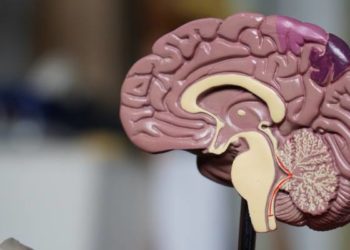Increasing maternal BMI linked to higher risk of cerebral palsy
1. This large scale cohort study found that higher maternal prepregnancy body mass index (BMI) was associated with an increased relative risk of offspring cerebral palsy (CP).
Evidence Rating Level: 1 (Excellent)
Study Rundown: Obesity affects an ever-increasing proportion of the world’s population, with far reaching effects on personal health and societal costs. Obesity in pregnancy has proven intrapartum, postpartum, and offspring-related complications. This study is the first to comprehensively evaluate the potential connection between maternal prepregnancy body mass index (BMI) and risk of having a child diagnosed with CP. Study authors used data from national surveys of pregnant women in Denmark and Norway, and linked these women to births in their respective national birth registries. Relative risk of having children with CP was calculated based on maternal BMI. Overall, the prevalence of CP increased steadily as maternal BMI increased. In overweight and obese mothers, the risk of having a child with CP was increased by more than half, compared to women of normal BMI. After adjustment for potential confounders such as maternal occupational status, smoking in the first trimester, and maternal age at birth, the significant of these findings remained. The results of this study highlight the significance of prepregnancy weight management in reducing the risk of developing CP. While comprehensive, the study result interpretation is limited by the use of self-report, including maternal BMI.
Click to read the study published today in Pediatrics
Relevant Reading: Is prepregnancy obesity associated with risk of cerebral palsy and epilepsy in children?
Study Author, Ms. Ingeborg Forthun, M.Econ, talks to 2 Minute Medicine: University of Bergen, Department of Global Public Health and Primary Care, and Haukeland University Hospital, Department of Pediatrics, Bergen, Norway.
“In this study we have combined data on more than 200 000 children and their mothers from two of the world’s largest cohorts resulting in a sample of exceptional size. The results support the increasing body of literature that shows a harmful effect of high BMI on fetal and infant neurodevelopment.”
In-Depth [prospective cohort]: This study included 188 788 children and mothers from Norway and Denmark initially recruited in pregnancy as part of 2 national mother-baby cohort databases. Of these children, a total of 390 were identified with CP (0.21%). Recruited mothers were either interviewed over the phone, or answered questions via mailed questionnaire. Prepregnancy BMI was calculated from self-reported height and weight obtained during the interview or in the questionnaire. BMI ranges were categorized per World Health Organization guidelines as underweight (BMI <18.5), lower normal (18.5-22.9), upper normal (23-24.9), overweight (25-29.9) and obese (>30). Among women in the first decile of BMI (13.2-19.4), the prevalence of CP was 1.4 per 1000 children. In the 10th decile of BMI (29.4-64.4), the rate of CP increased to 2.5 per 1000 children. For each unit increase in BMI, risk of CP increased by approximately 4% (RR 1.04, 95% CI 1.02-1.06). In overweight and obese mothers, the relative risk was over 50% (RR 1.56, 95% CI 1.21-2.01 and RR 1.55, 95% CI 1.11-2.18, respectively). Regardless of CP subtype, relative risk still increased with maternal BMI. Interestingly, there was no increased relative risk of CP among obese Danish women (RR 0.78, 95% CI 0.42-1.48) but there was a 130% excess risk among obese Norwegian women (RR 2.32, 95% CI 1.53-3.50).
Image: PD
©2016 2 Minute Medicine, Inc. All rights reserved. No works may be reproduced without expressed written consent from 2 Minute Medicine, Inc. Inquire about licensing here. No article should be construed as medical advice and is not intended as such by the authors or by 2 Minute Medicine, Inc.







